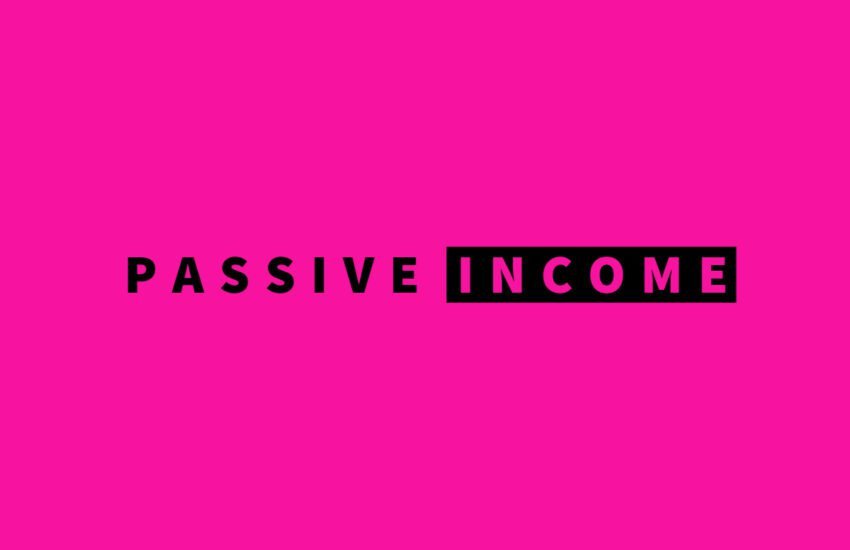Essential tips for a blogger to avoid depression from working solo
- You are not alone!
- Essential tips to Avoid Depression
- 1. Set Boundaries
- 2. Connect with Others
- 3. Take Breaks
- 4. Stay Active
- 5. Seek Feedback
- 6. Practice Self-Care
- 7. Set Realistic Goals
- 8. Celebrate Progress
- 9. Learn and Grow
- 10. Seek Support
- 11. Create a Routine
- 12. Practice Mindfulness
- 13. Diversify Your Work Environment
- 14. Celebrate Small Wins
- 15. Limit Social Media Comparison
- 16. Delegate Tasks
- 17. Practice Gratitude
- 18. Engage in Networking
- 19. Limit Screen Time
- 20. Know When to Take a Break
- Frequently Asked Questions
- 1. What are the basic requirements bloggers need to meet before applying for AdSense?
- 2. How can bloggers ensure their website design meets AdSense requirements?
- 3. How can bloggers create original and valuable content to meet AdSense requirements?
- 4. How can bloggers ensure their website traffic meets AdSense requirements?
- 5. How can bloggers ensure their website complies with AdSense policies regarding prohibited content?
- 6. How can bloggers ensure their website traffic sources align with AdSense requirements?
- 7. What steps can bloggers take to optimize their website design for AdSense ads?
- 8. How can bloggers enhance user engagement to improve AdSense performance?
- 9. How can bloggers ensure their website complies with AdSense policies regarding ad placement and implementation?
- 10. How can bloggers prepare their website for AdSense application review to increase approval chances?
You are not alone!
Hey there, fellow blogger! Let’s talk about something that doesn’t often get much attention in the blogging world: the emotional rollercoaster of working solo.
As creators, we pour our hearts and souls into our blogs, striving to produce content that resonates with our audience. But behind the polished posts and engaging photos lies a reality that many of us grapple with: the potential for loneliness and even depression when working alone.
Blogging, while incredibly rewarding, can also be isolating. Spending hours in front of a screen, churning out content, responding to comments, and managing the endless tasks that come with running a blog can take its toll on our mental well-being.
Without the camaraderie of coworkers or the structure of a traditional office environment, it’s easy to feel adrift in a sea of deadlines and self-doubt.
But fear not, my fellow solopreneur! There are ways to navigate this solitary journey without succumbing to the dark clouds of depression.
In this guide, we’ll explore some essential tips and strategies to help you maintain your mental health while thriving as a solo blogger. So grab a cup of coffee (or tea, if that’s more your style), and let’s embark on this journey together.
Essential tips to Avoid Depression
Working solo as a blogger can indeed be challenging, but here are some essential tips to avoid depression:
1. Set Boundaries
Establish clear boundaries between work and personal life to prevent burnout and maintain a healthy balance.
2. Connect with Others
Join blogging communities, forums, or social media groups to connect with fellow bloggers for support, collaboration, and camaraderie.
3. Take Breaks
Schedule regular breaks throughout your workday to relax, recharge, and prevent mental fatigue.
4. Stay Active
Incorporate physical activity into your routine to boost mood and reduce stress. Even a short walk or stretch break can make a difference.
5. Seek Feedback
Engage with your audience and seek constructive feedback on your work to stay motivated and improve your blogging skills.
6. Practice Self-Care
Prioritize self-care activities such as meditation, hobbies, or indulging in your favorite activities to nurture your mental and emotional well-being.
7. Set Realistic Goals
Break down your blogging goals into manageable tasks and celebrate your achievements along the way to maintain motivation and prevent feeling overwhelmed.
8. Celebrate Progress
Acknowledge and celebrate your blogging milestones, no matter how small, to stay positive and motivated.
9. Learn and Grow
Continuously invest in learning and skill development to stay relevant in your niche and prevent feelings of stagnation or inadequacy.
10. Seek Support
Don’t hesitate to seek professional help if you’re struggling with depression or mental health issues. A therapist or counselor can provide valuable support and guidance.
11. Create a Routine
Establishing a consistent work routine can provide structure and stability, reducing feelings of isolation and uncertainty.
12. Practice Mindfulness
Incorporate mindfulness techniques such as deep breathing, meditation, or mindfulness exercises to stay present, manage stress, and improve overall well-being.
13. Diversify Your Work Environment
Occasionally work from different locations such as a coffee shop, library, or co-working space to break the monotony and stimulate creativity.
14. Celebrate Small Wins
Acknowledge and celebrate even the smallest achievements to boost morale and maintain a positive outlook on your blogging journey.
15. Limit Social Media Comparison
Avoid comparing your progress or success to others on social media platforms, as this can lead to feelings of inadequacy and self-doubt. Focus on your own growth and journey instead.
16. Delegate Tasks
If possible, delegate non-core tasks such as administrative work or technical tasks to free up time and mental energy for your creative pursuits.
17. Practice Gratitude
Cultivate a gratitude practice by reflecting on the positive aspects of your blogging journey and expressing appreciation for the support and opportunities you encounter.
18. Engage in Networking
Attend blogging conferences, webinars, or networking events to meet like-minded individuals, exchange ideas, and form meaningful connections within the blogging community.
19. Limit Screen Time
Balance your online activities with offline hobbies and activities to prevent digital burnout and maintain a healthy lifestyle.
20. Know When to Take a Break
Recognize the signs of burnout or overwhelm and don’t hesitate to take a step back, recharge, and prioritize your well-being when needed.
Frequently Asked Questions
1. What are the basic requirements bloggers need to meet before applying for AdSense?
Bloggers need to meet several basic requirements before applying for AdSense:
Content Guidelines
Ensure that the blog complies with AdSense’s content policies, which prohibit illegal, adult, copyrighted, or deceptive content, and adhere to Google’s Webmaster Quality Guidelines.
Original Content
Create original, high-quality content that provides value to users and is not copied or plagiarized from other sources. Avoid publishing thin, low-quality, or spammy content that offers little value to readers.
Compliant Website
Have a website or blog that is fully functional, accessible to users, and compliant with AdSense’s program policies, including having a privacy policy, clear navigation, and easily accessible content.
Sufficient Content
Ensure that the blog has a sufficient amount of content before applying for AdSense, typically at least 10 to 20 well-written, substantial posts/pages that cover a range of topics relevant to the blog’s niche.
2. How can bloggers ensure their website design meets AdSense requirements?
Bloggers can ensure their website design meets AdSense requirements by:
Mobile Responsiveness
Use a mobile-responsive design that adapts seamlessly to different screen sizes and devices, ensuring a consistent and user-friendly experience for visitors accessing the site from smartphones or tablets.
Fast Loading Speed
Optimize the website’s loading speed by minimizing unnecessary scripts, compressing images, leveraging browser caching, and using efficient coding practices to enhance user experience and meet AdSense’s performance standards.
Clear Navigation
Design intuitive navigation menus and site structures that make it easy for users to find content, navigate between pages, and access important sections of the website without confusion or frustration.
Ad Placement Compliance
Ensure that ad placements comply with AdSense’s ad placement policies, such as avoiding placing ads near copyrighted content, obscuring ad labels, or using deceptive tactics to generate clicks.
3. How can bloggers create original and valuable content to meet AdSense requirements?
Bloggers can create original and valuable content to meet AdSense requirements by:
Researching Topics
Conduct thorough research on relevant topics within the blog’s niche, identifying popular keywords, trending themes, and user interests to inform content creation and ensure relevance and value to readers.
Writing Compelling Headlines
Craft attention-grabbing headlines that accurately reflect the content’s topic and promise value or benefit to readers, encouraging clicks and engagement.
Providing In-Depth Information
Write comprehensive, in-depth articles or blog posts that cover topics thoroughly, provide unique insights, answer common questions, and offer practical solutions or actionable advice to readers.
Using Multimedia
Enhance content with multimedia elements such as images, infographics, videos, or interactive features to increase engagement, illustrate key points, and cater to different learning styles and preferences.
4. How can bloggers ensure their website traffic meets AdSense requirements?
Bloggers can ensure their website traffic meets AdSense requirements by:
Organic Traffic
Focus on building organic traffic through search engine optimization (SEO), content marketing, social media promotion, and other legitimate methods that attract genuine visitors interested in the blog’s content.
Quality Traffic Sources
Generate traffic from high-quality sources such as search engines, reputable websites, social media platforms, and email newsletters, avoiding spammy or low-quality traffic sources that violate AdSense policies.
Increasing Engagement
Encourage user engagement and interaction with the website’s content through comments, social shares, likes, and other indicators of user interest and satisfaction, which can contribute to higher ad performance and revenue potential.
Monitoring Traffic Quality
Regularly monitor website analytics and traffic metrics to assess the quality of incoming traffic, identify potential sources of invalid traffic or click fraud, and take proactive measures to address any issues that may arise.
5. How can bloggers ensure their website complies with AdSense policies regarding prohibited content?
Bloggers can ensure their website complies with AdSense policies regarding prohibited content by:
Reviewing Content Guidelines
Familiarize themselves with AdSense’s content policies and program guidelines, which prohibit illegal, adult, violent, copyrighted, or deceptive content, and ensure that all content published on the website adheres to these guidelines.
Monitoring User-Generated Content
Implement moderation and review processes for user-generated content such as comments, forum posts, or guest contributions to prevent the publication of prohibited content or inappropriate material that could jeopardize AdSense eligibility.
Using Content Filters
Use content filtering tools, plugins, or moderation settings to automatically detect and remove prohibited keywords, phrases, or content types that violate AdSense policies, minimizing the risk of accidental policy violations.
Regular Audits
Conduct regular audits of website content to identify and address any instances of prohibited or non-compliant content that may have been overlooked or inadvertently published, taking corrective action to bring the website into compliance with AdSense policies.
6. How can bloggers ensure their website traffic sources align with AdSense requirements?
Bloggers can ensure their website traffic sources align with AdSense requirements by:
Diversifying Traffic Channels
Diversify traffic sources to include a mix of organic search traffic, social media referrals, direct visits, email marketing, and other legitimate sources, reducing reliance on any single traffic channel and ensuring stability and resilience.
Avoiding Black-Hat Tactics
Avoid engaging in black-hat SEO tactics, such as buying traffic, using automated bots, or participating in link schemes, which can result in penalization by search engines and violate AdSense policies.
Building Organic Traffic
Focus on building organic traffic through white-hat SEO strategies, content marketing, and audience engagement techniques that attract genuine visitors interested in the blog’s content and offerings.
Monitoring Traffic Quality
Regularly monitor traffic sources, referral patterns, and user behavior metrics to identify any irregularities, suspicious activity, or signs of invalid traffic that may indicate potential policy violations or fraudulent activity.
Complying with AdSense Policies
Ensure that all traffic generation methods and promotional activities comply with AdSense’s program policies and guidelines, avoiding any practices that may artificially inflate traffic or manipulate user engagement metrics in violation of AdSense rules.
7. What steps can bloggers take to optimize their website design for AdSense ads?
Bloggers can optimize their website design for AdSense ads by:
Strategic Placement
Strategically place ad units in high-visibility areas of the website, such as above the fold, within the content, or near navigation menus, to maximize visibility and click-through rates without disrupting user experience.
Responsive Ad Units
Use responsive ad units that automatically adjust their size, format, and placement based on the user’s device and screen size, ensuring optimal ad display and user experience across desktop, mobile, and tablet devices.
Customization Options
Customize ad units to match the website’s design, color scheme, and branding elements, blending them seamlessly into the layout while maintaining visual appeal and coherence with the overall aesthetic.
A/B Testing
Conduct A/B tests or split tests to experiment with different ad formats, sizes, placements, and designs to identify the most effective configurations that maximize ad performance and revenue potential.
8. How can bloggers enhance user engagement to improve AdSense performance?
Bloggers can enhance user engagement to improve AdSense performance by:
Quality Content
Create high-quality, engaging content that resonates with the target audience, addresses their needs and interests, and encourages repeat visits and prolonged engagement with the website.
Interactive Elements
Incorporate interactive elements such as polls, quizzes, surveys, or interactive multimedia content to encourage user participation, increase time spent on site, and foster a sense of community and interaction among visitors.
Call-to-Action (CTA)
Include clear and compelling calls-to-action (CTAs) within the content or ad units to prompt users to take desired actions, such as clicking on ads, subscribing to newsletters, or exploring related content, effectively guiding user behavior and maximizing ad performance.
Community Engagement
Foster community engagement through comments, forums, social media interactions, or user-generated content initiatives, encouraging active participation, discussion, and sharing of content among users, which can contribute to increased traffic and ad revenue.
9. How can bloggers ensure their website complies with AdSense policies regarding ad placement and implementation?
Bloggers can ensure their website complies with AdSense policies regarding ad placement and implementation by:
Ad Placement Guidelines
Adhere to AdSense’s ad placement policies and guidelines, which specify rules and best practices for ad positioning, spacing, labeling, and behavior to ensure a positive user experience and compliance with program policies.
Responsive Design
Ensure that ad units are implemented in a responsive and user-friendly manner, adjusting their size, format, and placement dynamically based on the user’s device, screen size, and browsing context to maintain visual integrity and usability across different platforms.
Avoiding Intrusive Ads
Avoid using intrusive ad formats or techniques that may disrupt or distract users from the main content, such as pop-up ads, auto-playing video ads, or full-screen overlays, which can negatively impact user experience and violate AdSense policies.
Ad Labeling
Clearly label ad units as advertisements or sponsored content to distinguish them from editorial or organic content, ensuring transparency and compliance with FTC guidelines and AdSense requirements regarding ad labeling and disclosure.
10. How can bloggers prepare their website for AdSense application review to increase approval chances?
Bloggers can prepare their website for AdSense application review to increase approval chances by:
Content Optimization
Ensure that the website contains sufficient high-quality content that provides value to users and complies with AdSense’s content policies and guidelines, focusing on originality, relevance, and user engagement.
Adherence to Policies
Review AdSense’s program policies and guidelines thoroughly to ensure that the website complies with all requirements and restrictions regarding content, traffic, ad placement, and implementation, addressing any potential policy violations or areas of concern proactively.
User Experience
Prioritize user experience and site usability by optimizing website design, navigation, loading speed, and mobile responsiveness to create a positive browsing experience for visitors and enhance AdSense performance and approval chances.
Transparency and Disclosure
Provide accurate and up-to-date information about the website, its content, audience demographics, and traffic sources during the AdSense application process, ensuring transparency and honesty in all communications with Google’s review team.
By following these steps and guidelines, bloggers can increase their chances of successfully obtaining AdSense approval and monetizing their websites with display advertising.


